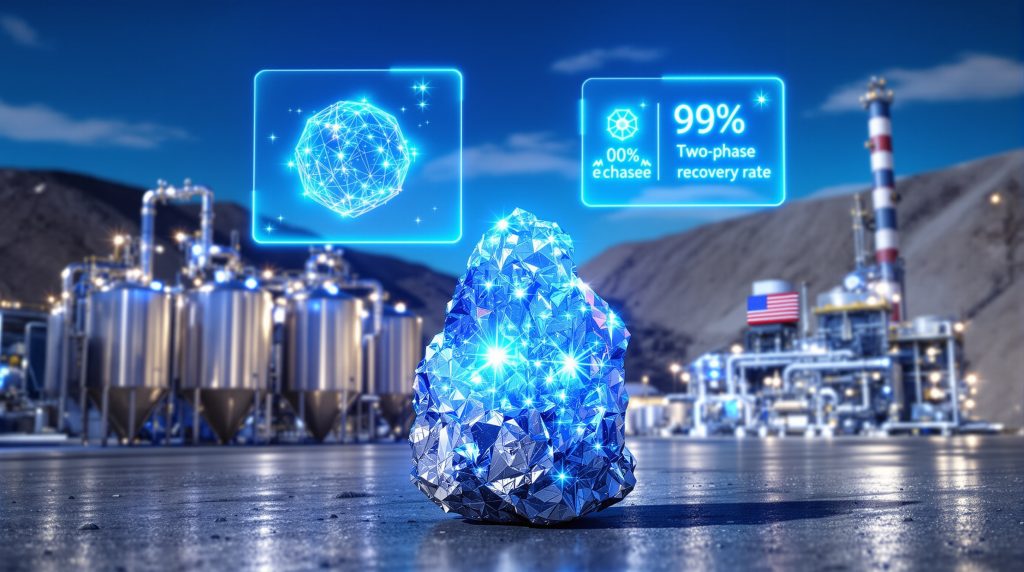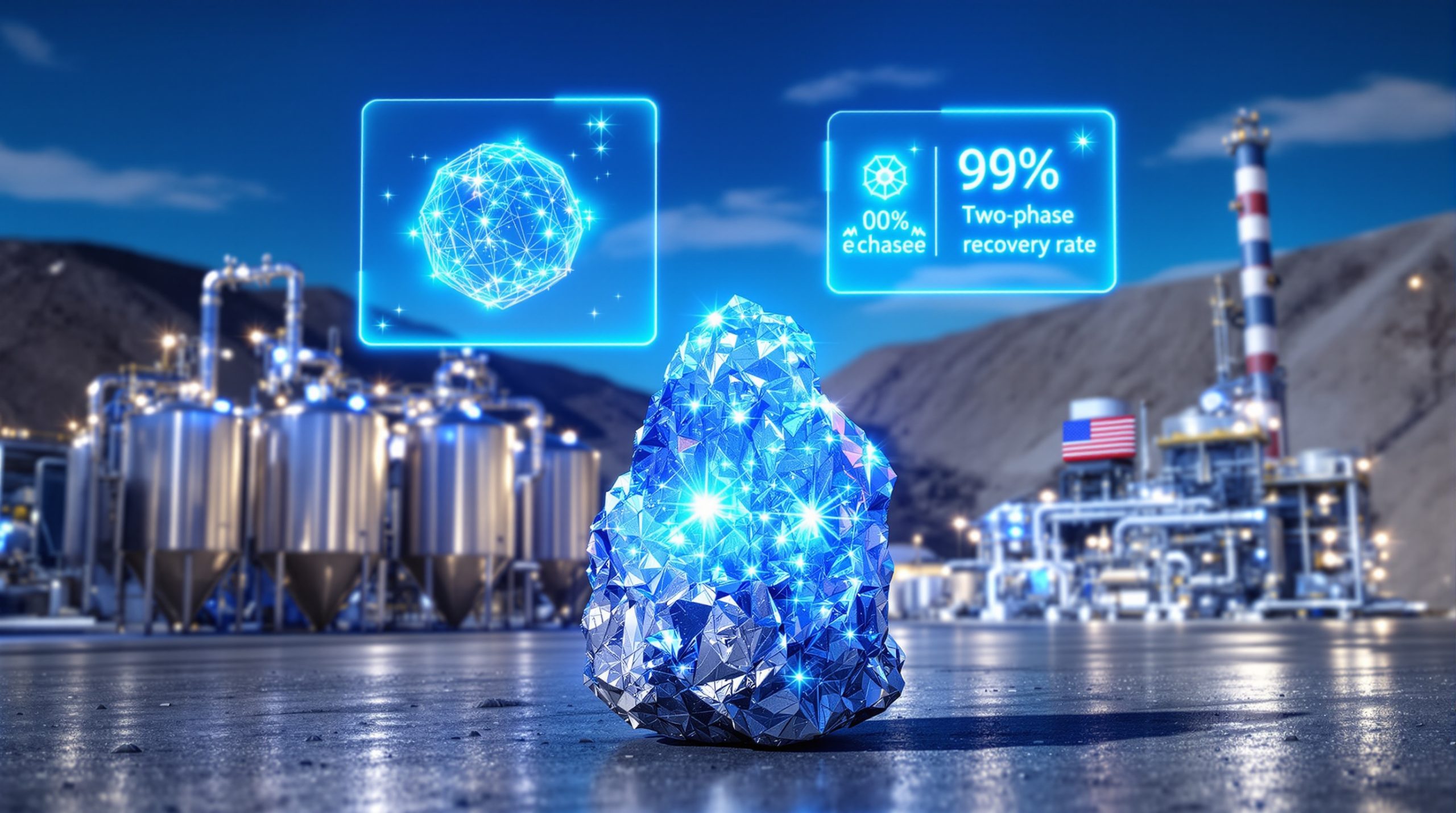Revolutionary Antimony Extraction: A New Era for Critical Minerals
Recent advancements in antimony recovery technology represent a watershed moment for the mining industry, particularly for domestic supply chains of this critical mineral. A breakthrough extraction method has achieved unprecedented efficiency, with recovery rates exceeding 99% from copper concentrates—far surpassing what conventional methods could previously deliver.
Understanding Antimony's Strategic Importance
Antimony has established itself as an essential resource across multiple industries including defense, electronics, and renewable energy sectors. The U.S. government's classification of antimony as a critical minerals transition underscores its strategic value, especially as global supply chains face mounting pressures from geopolitical tensions and regulatory shifts in major producing nations.
The material serves crucial functions in flame retardants for textiles and plastics, components for lead-acid batteries, semiconductor manufacturing, and specialized military applications including infrared detection systems and ammunition. Its unique properties make substitution difficult in many high-performance applications.
The Technology Behind the Breakthrough
The revolutionary extraction method employs Alkaline Selective Leaching (ASL) hydrometallurgical technology—an optimized version of industrial processes with proven effectiveness that had been unavailable in North America for over two decades. This innovative approach selectively targets antimony while preserving valuable metals like silver and copper in the concentrate.
The ASL technology represents a significant advancement of legacy technology that operated successfully for approximately 60 years at the Sunshine Mining antimony plant until its closure in 2002. Modern mining technology and environmental considerations have been incorporated into this latest iteration.
How Does the New Extraction Process Work?
The groundbreaking extraction methodology operates through a sophisticated two-phase process that maximizes mineral recovery while addressing environmental concerns associated with traditional processing methods.
Phase One: Enhanced Flotation Recovery
The initial phase focuses on selective flotation of tetrahedrite ore, which contains antimony in the form of a sulfosalt mineral combined with silver, copper, and iron. This process achieves remarkable recovery rates:
- 90-96% antimony recovery from ore grading approximately 1% stibnite
- 98-99% silver recovery from ore containing roughly 50 oz/ton
- 96-98% copper recovery from ore grading approximately 1%
- Production of rougher concentrate grades of 18-19% antimony, 600 opt silver, and 24% copper
Phase Two: Advanced Hydrometallurgical Processing
The second phase applies the proprietary ASL technology to the flotation concentrate, resulting in exceptional extraction rates:
- Over 99% antimony extraction from concentrate grading approximately 19% antimony
- More than 72% arsenic extraction, significantly improving environmental performance
- Complete retention of silver and copper at enhanced grades
- Gold extraction rates between 25-60% from the flotation concentrate
This dual-phase approach represents a significant improvement over traditional processing methods, which typically struggle to achieve such high recovery rates while maintaining concentrate quality.
What Makes This Technology Revolutionary for the Mining Industry?
The antimony extraction breakthrough stands apart from conventional approaches in several key aspects that collectively transform the economics and environmental profile of antimony production.
Historical Context and Technological Evolution
This revolutionary technology builds upon proven industrial processes that operated successfully for decades at the Sunshine Mining antimony plant. The current iteration represents a significant advancement, incorporating environmental innovations to create a more efficient and sustainable solution.
| Historical vs. Modern Antimony Processing | ||
|---|---|---|
| Processing Aspect | Traditional Methods | New ASL Technology |
| Antimony Recovery Rate | Typically 70-85% | Over 99% from concentrate |
| Arsenic Management | Limited removal capabilities | Over 72% extraction |
| Precious Metals Recovery | Variable retention | Complete silver retention, enhanced gold recovery |
| Environmental Impact | Higher waste generation | Reduced hazardous waste, improved arsenic management |
| Process Complexity | Multiple stages with varying efficiency | Streamlined two-phase approach |
Environmental and Regulatory Advantages
The breakthrough technology addresses key environmental challenges that have historically limited antimony production in regions with stringent regulations:
- Arsenic Reduction: The process removes over 72% of arsenic from concentrates, potentially allowing for stabilization as iron compounds for safe disposal
- Reduced Processing Chemicals: More efficient extraction reduces the volume of reagents required
- Waste Minimization: Higher recovery rates translate to less material being discarded as waste
- Regulatory Compliance: Enhanced environmental performance aligns with modern permitting requirements
Unlike traditional smelting, which requires high temperatures and often produces significant emissions, the ASL hydrometallurgical process operates at lower temperatures using selective chemical leaching. This results in reduced energy consumption, lower emissions, and more precise separation of target metals from impurities.
What Are the Economic Implications of This Breakthrough?
The economic impact of this technological advancement extends beyond the immediate benefits to mining operations, creating ripple effects throughout the mineral supply chain and broader economy.
Value Creation from Previously Overlooked Resources
The technology transforms what was once considered a problematic by-product into a valuable revenue stream. By extracting antimony at commercially viable rates, mining operations can:
- Diversify revenue sources beyond traditional precious and base metals
- Improve overall project economics through multi-metal recovery
- Potentially access premium pricing for domestically-produced critical minerals
- Reduce penalties associated with deleterious elements in concentrates
This represents a significant opportunity for mining companies to extract value from resources that were previously underutilized or ignored entirely.
Supply Chain Resilience and Strategic Positioning
The development of domestic antimony production capability addresses critical vulnerabilities in the supply chain:
- Reduces dependence on imports from geopolitically sensitive regions
- Creates the first domestic mine-to-market antimony production in the U.S. in approximately 25 years
- Aligns with government initiatives to secure strategic antimony financing
- Positions early adopters as strategic suppliers to defense and technology sectors
This potential shift toward domestic production comes at a critical time as global supply chains face increasing pressures and strategic minerals gain greater attention from policymakers and industry leaders.
How Will This Technology Impact Future Mining Operations?
The successful implementation of this breakthrough extraction process has far-reaching implications for the future of mining, particularly for operations dealing with complex polymetallic ores.
Potential for Technology Transfer and Adaptation
While initially proven effective for antimony extraction from tetrahedrite, the underlying principles of the ASL technology could potentially be adapted for:
- Recovery of other critical minerals from complex ores
- Treatment of historical tailings containing recoverable antimony
- Processing of concentrates currently considered sub-economic due to impurity levels
- Integration into existing processing circuits to improve overall metal recovery
The adaptability of this technology creates opportunities for innovation across various mining operations and could lead to the development of new processing techniques for other challenging minerals.
Reshaping Project Economics and Development Decisions
The ability to efficiently recover antimony as a valuable by-product could influence:
- Reassessment of resources previously considered uneconomic
- Reconsideration of development timelines for projects with antimony-bearing minerals
- Investment decisions based on enhanced project economics
- Exploration targeting strategies to identify deposits with critical mineral potential
Mining companies may find significant value in reassessing their existing resources through the lens of this new technology, potentially uncovering economic opportunities that were previously overlooked.
What Steps Are Required to Implement This Technology Commercially?
Moving from successful testing to full-scale commercial implementation involves several critical steps that must be carefully managed to ensure operational success.
Technical and Engineering Considerations
The path to commercial implementation requires:
- Detailed engineering studies to scale up the laboratory-proven process
- Pilot plant operation to validate continuous processing parameters
- Integration planning with existing processing circuits
- Optimization of reagent consumption and process conditions
- Development of quality control protocols for final antimony products
Each of these steps involves careful analysis and planning to ensure the technology functions as expected at commercial scale.
Market Development and Commercialization Strategy
Beyond the technical aspects, successful commercialization depends on:
- Identifying and securing offtake agreements with end users
- Determining optimal product specifications for target markets
- Establishing pricing mechanisms that reflect the strategic value of domestic supply
- Developing logistics solutions for specialized antimony products
- Creating marketing strategies that highlight the domestic origin and environmental advantages
Companies must consider both the technical implementation and market development aspects to fully capitalize on the technology's potential.
What Are the Broader Implications for Critical Minerals Supply?
The antimony extraction breakthrough represents more than just a single technological advancement—it signals a potential shift in how critical minerals are sourced and processed globally.
Template for Critical Minerals Recovery
The success of this technology provides a potential model for addressing other critical mineral supply challenges:
- Demonstrates the viability of recovering strategic metals from complex domestic sources
- Establishes a precedent for revitalizing historical mining districts with modern technology
- Provides a case study in converting environmental challenges into economic opportunities
- Illustrates the value of investing in advanced metallurgical research for critical minerals strategy
This breakthrough could serve as a blueprint for addressing supply challenges for other critical minerals facing similar extraction and processing challenges.
Impact on Global Supply Dynamics
As this technology is implemented and potentially replicated:
- Global antimony supply patterns could shift toward greater diversification
- Price volatility may decrease as supply becomes more reliable
- Traditional producing regions may face pressure to improve environmental performance
- End users may prioritize supply chain security over lowest-cost sourcing
The ripple effects of this technology could reshape global antimony markets and influence how critical minerals are valued and traded.
FAQs About Antimony Extraction Technology
What is antimony primarily used for in modern applications?
Antimony serves critical functions in multiple industries, including flame retardants for textiles and plastics, lead-acid battery components, semiconductor manufacturing, and military applications such as infrared detection systems and ammunition. Its unique properties make it difficult to substitute in many high-performance applications.
How does the new extraction technology compare to traditional smelting methods?
Unlike traditional smelting, which requires high temperatures and often produces significant emissions, the ASL hydrometallurgical process operates at lower temperatures using selective chemical leaching. This results in reduced energy consumption, lower emissions, and more precise separation of target metals from impurities.
What environmental benefits does this technology offer?
The technology provides several environmental advantages, including reduced arsenic in final products, lower energy requirements compared to pyrometallurgical processes, potential for closed-loop water systems, and improved management of deleterious elements that would otherwise report to smelter emissions or waste streams.
Can this technology be applied to other antimony-bearing deposits globally?
While initially proven on tetrahedrite ore from the Galena Complex, the underlying principles of the ASL technology could potentially be adapted to other antimony-bearing minerals and deposits, though specific process modifications would likely be required based on mineralogy and gangue composition.
What is the timeline for commercial implementation of this technology?
Following successful laboratory testing, commercial implementation typically requires 12-24 months for engineering design, equipment procurement, construction, and commissioning. Initial commercial production could potentially begin within two years, with full-scale operations achieved thereafter according to industry experts.
Disclaimer: This article contains forecasts and speculative analysis regarding future antimony production and market dynamics. Actual results may vary based on numerous factors including regulatory approvals, capital availability, and market conditions. Readers should conduct their own due diligence before making investment or business decisions based on this information.
Looking for the Next Mining Breakthrough Investment?
Discovery Alert's proprietary Discovery IQ model instantly notifies investors about significant ASX mineral discoveries like revolutionary extraction technologies, providing actionable insights before the broader market. Visit the Discovery Alert discoveries page to understand how early identification of game-changing technologies can lead to exceptional investment returns.




